Quand il s'agit d'équipement de ski, choisir entre la location pour la saison, l'achat de votre propre matériel ou essayer des skis courts compacts comme Snowfeet* peut sembler un grand choix. Voici le topo :
- Louer est parfait si vous skiez occasionnellement ou ne voulez pas gérer le stockage ou l'entretien. Les coûts varient de 200 à 400 $ par saison, et vous aurez toujours du matériel à jour.
- Acheter est idéal pour les skieurs réguliers (5 jours ou plus par saison) qui veulent un équipement sur mesure. Prévoyez de dépenser 800 à 1 500 $ ou plus au départ plus 60 à 120 $ par an pour l'entretien.
- Snowfeet* offre un compromis avec des options compactes et légères à partir de 150 $. Ils sont faciles à transporter, nécessitent peu de rangement et ne demandent pas de bottes de ski spéciales.
Résumé rapide : Louez si vous êtes un skieur occasionnel, achetez si vous êtes engagé, et pensez à Snowfeet* si vous voulez un équipement portable à faible coût sans tracas. Décomposons cela plus en détail.
Louer ou acheter du matériel de ski : quelle est la meilleure option pour votre séjour au ski ? | Série BeAlive Recess
Location de skis pour toute la saison vs. achat d'équipement standard
Quand il s'agit d'équipement de ski, des marques comme Rossignol, Salomon, K2 et Volkl sont des noms bien connus. Mais savoir s'il faut louer ou acheter leur matériel n'est pas toujours un choix évident - cela dépend de votre budget, de vos habitudes de ski et de vos priorités.
Répartition des coûts : location vs achat
Les locations de skis pour toute la saison sont une option populaire, avec des coûts généralement compris entre 200 et 400 $ par saison dans les grandes stations de ski américaines. Le prix varie en fonction de la qualité du matériel et de l’emplacement de la station.
Acheter son propre équipement, en revanche, représente un investissement initial plus important. Un ensemble complet - skis, fixations, chaussures et bâtons - coûte entre 800 et 1 500 $ pour du matériel milieu de gamme. Les ensembles haute performance peuvent facilement dépasser 2 000 $, avec seulement les skis coûtant 600 à 1 200 $.
Voici l’avantage de la propriété : après deux ou trois saisons d’utilisation régulière, le coût d’achat de votre matériel s’équilibre souvent par rapport à la location. De plus, un équipement bien entretenu conserve sa valeur. Par exemple, les skis de marques comme Atomic ou Head peuvent conserver 30 à 50 % de leur prix d’origine après trois ans.
Cela dit, posséder du matériel entraîne des coûts récurrents. L’entretien annuel comme les réglages (40 à 80 $ par saison) et le fartage (15 à 25 $ par service) s’additionnent. Les réparations et les solutions de stockage - surtout si vous vivez dans un espace restreint - peuvent ajouter 100 à 300 $ supplémentaires chaque année.
Commodité et flexibilité
Si vous êtes un skieur occasionnel ou que vous voyagez beaucoup, les locations sont difficiles à battre. Elles éliminent les tracas du transport, du stockage et de l’entretien de votre équipement. Vous pouvez simplement vous présenter dans un magasin de ski, être équipé avec le matériel le plus récent, et partir directement sur les pistes. C’est particulièrement pratique si vous visitez plusieurs stations ou vivez dans un petit appartement sans place pour des skis encombrants.
Un autre avantage ? Les magasins de location s’occupent de l’entretien, vous n’avez donc pas à vous soucier de l’affûtage ou des réparations. Si quelque chose ne va pas, vous pouvez échanger votre matériel sur place.
Posséder son propre équipement, cependant, comporte des défis logistiques. Les skis alpins standards mesurent 160-180 cm de long, ce qui signifie que vous aurez besoin de barres de toit ou de sacs spécialisés pour le transport. Voyager en avion avec des skis ? C’est un autre casse-tête - les compagnies aériennes facturent souvent 75 à 150 $ dans chaque sens pour les bagages surdimensionnés.
Et puis il y a le stockage. Les skis doivent être stockés correctement - à l'abri de la chaleur, de l'humidité et de la lumière du soleil - pour éviter les dommages. Pour les skieurs urbains, cela peut signifier payer un stockage externe, ce qui augmente les coûts annuels.
| Aspect | Locations pour toute la saison | Acheter du matériel traditionnel |
|---|---|---|
| Coût annuel | 200-400 $ par saison | 800-1 500 $+ à l'achat, plus entretien |
| Espace de stockage requis | Aucun | Important (plus de 6 pieds d'espace) |
| Commodité de voyage | Disponible à destination | Nécessite transport/expédition |
| Entretien | Inclus | 60-120 $+ par an |
| Mises à jour de l'équipement | Modèles toujours actuels | Remplacer tous les 5-10 ans |
| Personnalisation | Limitée au stock disponible | Personnalisation complète possible |
Performance et personnalisation
Si vous êtes sérieux au sujet du ski, posséder votre équipement peut faire une différence notable. La familiarité avec votre matériel vous aide à affiner votre technique et à gagner en confiance. Avec le temps, vous apprendrez comment vos skis réagissent dans différentes conditions - poudreuse, pistes damées ou plaques de verglas.
Pour les skieurs avancés et les moniteurs, la constance est primordiale. Votre mémoire musculaire s'adapte aux caractéristiques spécifiques des skis comme la flexibilité et le rayon de courbe. Passer d'un ski de location, qui peut varier en état et en performance, peut vous déstabiliser. Les modèles de location, surtout les plus populaires, sont souvent très utilisés, ce qui peut affecter leur précision et leur réactivité.
Les chaussures sont une autre histoire. Des chaussures de ski bien ajustées sont essentielles pour le confort et la performance. Les chaussures de location ne peuvent rivaliser avec l'ajustement précis et personnalisé des chaussures que vous possédez. Beaucoup de skieurs qui louent des skis choisissent quand même d'investir dans leurs propres chaussures pour un meilleur contrôle et éviter l'inconfort.
Cela dit, la location a ses avantages pour l'expérimentation. Elle vous permet d'essayer différentes marques et styles - comme les skis all-mountain ou carving - sans engagement d'achat. C'est un excellent moyen de déterminer ce qui convient le mieux à votre style de ski avant d'acheter.
Bien que le matériel de location se soit considérablement amélioré ces dernières années, avec des modèles récents de grandes marques, la familiarité et la fiabilité de posséder son propre équipement restent très attractives pour les skieurs passionnés.
Pourquoi les Short Skis Snowfeet* surpassent les deux options
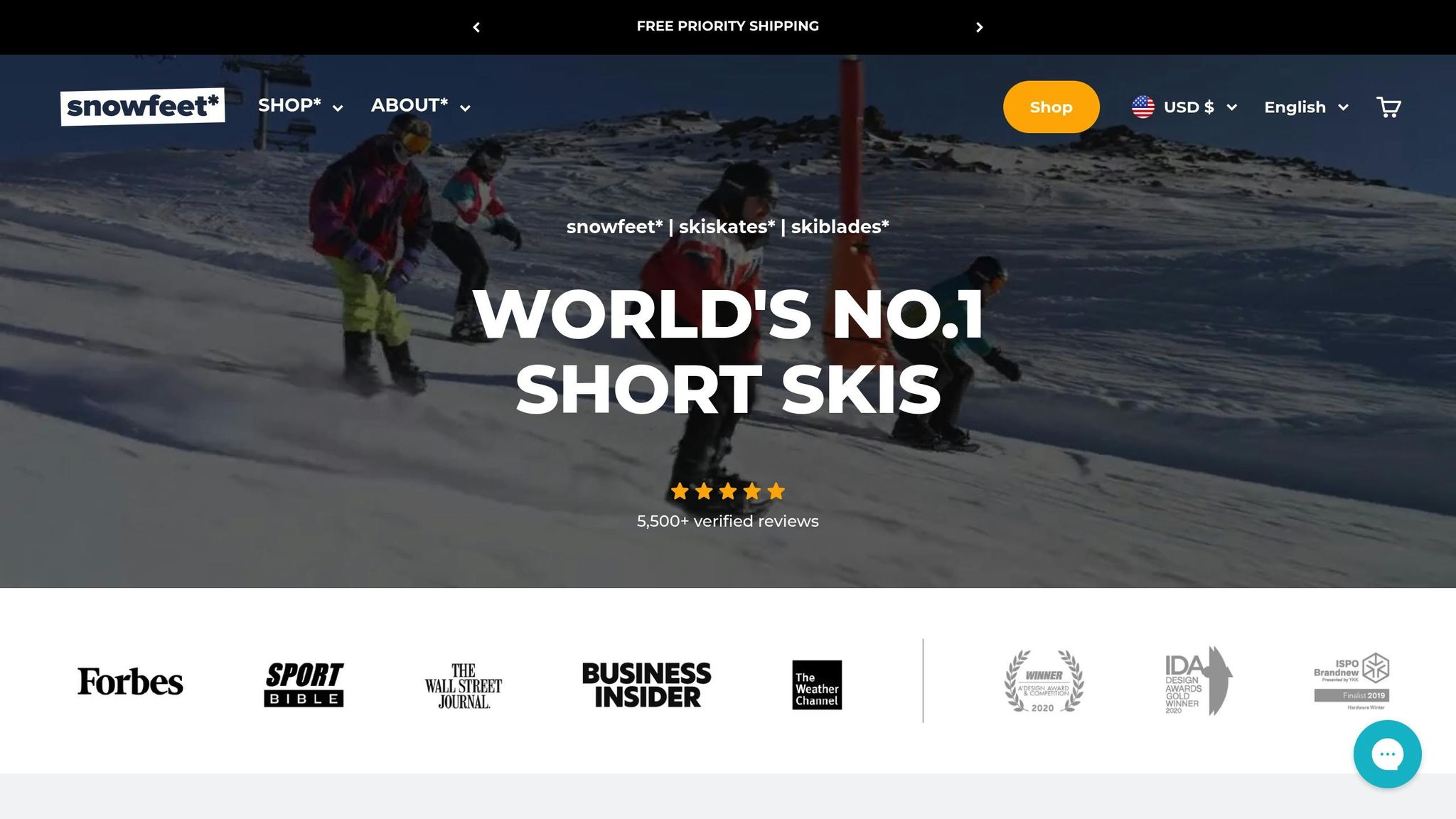
Quand il s'agit de skier, vous êtes souvent obligé de choisir entre des locations coûteuses ou la corvée de transporter du matériel traditionnel. Mais les short skis Snowfeet* offrent une alternative rafraîchissante qui résout beaucoup de ces problèmes courants. Ils mettent l'accessibilité et la commodité au premier plan, répondant à la demande croissante pour un équipement de ski compact et polyvalent.
Des coûts réduits et un meilleur rapport qualité-prix
Parlons chiffres. Les produits Snowfeet* commencent à seulement 150 $, ce qui est bien loin des 800 à 1 500 $ que vous dépenseriez pour un équipement de ski traditionnel. Même leurs Short Skis premium de 120 cm culminent à 690 $ - toujours moins cher qu'un équipement traditionnel de milieu de gamme. Et cela avant même de prendre en compte les coûts supplémentaires des fixations, des chaussures et des bâtons.
Par exemple, le populaire Snowfeet* PRO (50 cm) est proposé à 199 $, tandis que les Skiskates professionnels coûtent entre 390 $ et 450 $. C'est une fraction de ce que vous dépenseriez pour du matériel traditionnel.
L'entretien est un autre domaine où Snowfeet* brille. Les skis traditionnels nécessitent des réglages fréquents et du fartage, ce qui peut vite s'accumuler. Les produits Snowfeet*, en revanche, demandent un minimum d'entretien - une simple routine de fartage avec un produit à 6 $ suffit souvent.
Faciles à ranger, faciles à transporter
L'un des avantages remarquables de Snowfeet* est leur compacité. Alors que les skis alpins traditionnels mesurent généralement entre 160 et 180 cm (environ 5 à 6 pieds), les modèles Snowfeet* vont de 38 à 120 cm. Beaucoup de leurs options les plus populaires font moins de 4 pieds, et leurs Mini Ski Skates (38 cm) peuvent même se glisser facilement dans un sac à dos.
Pesant à peine 3 lbs, le matériel Snowfeet* est facile à emporter en bagage à main, vous évitant les frais de bagages surdimensionnés et les soucis de stockage. Cela en fait un rêve pour les citadins qui ne veulent pas que leur appartement soit envahi par du matériel de ski encombrant.
Et le design léger n'est pas seulement pratique pour le rangement - c'est aussi un atout sur les pistes. Porter des skis traditionnels lourds entre les descentes ou les zones de la station peut être épuisant. Avec Snowfeet*, vous remarquerez à peine le poids, rendant votre journée en montagne bien plus agréable.
Polyvalence et courbe d'apprentissage rapide
Les skis traditionnels vous enferment souvent dans un seul type d'activité et nécessitent des chaussures spécialisées. Snowfeet* change la donne en fonctionnant avec des chaussures d'hiver ordinaires, des boots de snowboard ou des chaussures de ski. Cette flexibilité signifie que vous n'aurez pas besoin d'investir dans plusieurs systèmes de chaussures ni de gérer les tracas des chaussures de location mal ajustées.
L'apprentissage est aussi beaucoup plus facile avec Snowfeet*. Leur longueur plus courte les rend plus réactifs et moins intimidants pour les débutants. Alors que les skis traditionnels longs peuvent être difficiles à contrôler, le matériel Snowfeet* aide les nouveaux skieurs à gagner en confiance plus rapidement.
Et ils ne sont pas seulement faits pour les pistes. Le matériel Snowfeet* est assez polyvalent pour les parcs, les sentiers, et même votre jardin. Comparez cela aux skis de location traditionnels, généralement limités aux environnements de stations.
Pour les familles, cette facilité d'utilisation est un énorme avantage. Les parents peuvent apprendre à leurs enfants sans lutter avec du matériel surdimensionné, rendant ces premiers jours sur les pistes plus amusants et moins frustrants. Snowfeet* rend les sports d'hiver plus accessibles à tous - que vous soyez débutant ou simplement à la recherche d'une façon plus simple de profiter de la neige.
Voici un rapide comparatif pour tout résumer :
| Caractéristique | Locations saisonnières | Skis traditionnels | Snowfeet* Short Skis |
|---|---|---|---|
| Coût initial | $200–$400/saison | $800–$1,500+ | $150–$690 (paiement unique) |
| Longueur | 160–180 cm | 160–180 cm | 38–120 cm |
| Compatibilité des chaussures | Chaussures de ski uniquement | Chaussures de ski uniquement | Chaussures d'hiver, boots de snowboard ou chaussures de ski |
| Espace de rangement | N/A | ~5–6 pieds | Moins de 4 pieds |
| Poids en voyage | N/A | 10–15 lbs (+ chaussures) | 3–8 lbs |
| Options de terrain | Pistes de station uniquement | Pistes de station uniquement | Pistes, parks, sentiers, jardins |
| Difficulté d'apprentissage | Modéré à élevé | Modéré à élevé | Facile à modéré |
sbb-itb-17ade95
Performance, flexibilité et expérience utilisateur
Quand vous êtes sur les pistes, avoir un équipement performant peut faire toute la différence. Les produits Snowfeet* sont conçus pour une performance fiable et réactive, ce qui les distingue des locations de skis classiques et des skis longs traditionnels.
Performance constante avec votre propre équipement
Les skis de location peuvent être aléatoires - certains sont excellents, mais d'autres peuvent vous faire galérer. Les équipements traditionnels, bien qu'excellents sur pistes damées, montrent souvent leurs limites dans des conditions plus variées. Avec Snowfeet*, vous avez un matériel qui offre une performance constante à chaque fois. Que vous utilisiez les compacts 38 cm Mini Ski Skates ou les plus longs 120 cm Short Skis, la maniabilité reste constante, vous aidant à développer votre mémoire musculaire et votre confiance sur la neige.
De plus, le matériel Snowfeet* dispose d'un ajustement universel pour les chaussures, vous évitant les tracas des locations spécialisées. Cette constance change la donne, surtout pour les familles et les novices en ski.
Parfait pour les familles et les débutants
Commencer avec des skis de longueur normale peut être intimidant, surtout pour les enfants. Les produits Snowfeet*, avec leur design plus court et moins intimidant, facilitent la prise de contrôle pour les débutants. Pouvoir voir leurs pieds aide à renforcer la confiance, ce qui est crucial quand on débute.
Pour les familles, Snowfeet* est un gagnant. Le design léger et compact signifie que vous pouvez vous entraîner dans votre jardin, aller à la colline de luge locale ou même les emmener sur des sentiers de randonnée enneigés. Avec des modèles adaptés à différents niveaux de compétence, le matériel Snowfeet* évolue avec les besoins de votre famille. Cette polyvalence en fait un excellent choix pour les familles souhaitant profiter des sports d'hiver ensemble sans l'encombrement du matériel traditionnel.
Pourquoi les skis plus courts fonctionnent mieux
Les skis plus courts ne sont pas seulement plus faciles à utiliser - ils sont aussi plus amusants. Ils offrent une meilleure maniabilité et réduisent la fatigue, ce qui les rend idéaux pour les skieurs récréatifs. Alors que les skis longs brillent dans la poudreuse profonde ou à grande vitesse, la plupart des skieurs préfèrent les virages rapides et l'agilité que procurent les designs plus courts. Snowfeet* prend cela à cœur, remettant en question l'idée que les skis longs sont toujours la meilleure option.
Un autre avantage ? Les skis plus courts comme ceux de Snowfeet* sont plus doux pour votre corps. Les skis longs peuvent fatiguer vos jambes et votre tronc, mais le design compact du matériel Snowfeet* aide à conserver votre énergie. Cela signifie plus de temps à profiter des pistes et moins de temps à se sentir épuisé.
Alors que les locations et les skis traditionnels font le travail, Snowfeet* se distingue par son design adaptable et convivial. Si vous cherchez à améliorer vos aventures hivernales, Snowfeet* offre une nouvelle approche de la performance et de la facilité d'utilisation.
Faire le bon choix pour vos besoins en ski
Choisir entre des locations saisonnières, des skis traditionnels ou Snowfeet* dépend de votre budget, de l'espace de rangement et de vos objectifs de ski.
Considérations clés pour les skieurs américains
Décomposons cela. Les locations entraînent des frais continus, les équipements de ski traditionnels exigent un investissement initial important (et sont encombrants à stocker), et puis il y a Snowfeet*. Ces options compactes et portables commencent à seulement 150 $ pour les Skiskates Mini Ski et vont jusqu'à 690 $ pour les Short Skis.
Les skis traditionnels peuvent être difficiles à transporter et à ranger. Snowfeet*, en revanche, est conçu pour la commodité. Les Skiskates Mini Ski de 38 cm se glissent facilement dans un sac à dos, et même les Short Skis de 120 cm sont bien plus faciles à gérer que les skis longs et conventionnels.
La polyvalence est là où Snowfeet* brillent vraiment. Les locations vous limitent généralement aux pistes de la station, et les skis traditionnels nécessitent souvent des conditions spécifiques. Snowfeet* ? Ils sont prêts pour les pistes de ski, les sentiers de randonnée, les collines locales, ou même votre jardin. Vous n'êtes pas limité à un seul type de terrain, ce qui signifie plus de façons de profiter de l'hiver.
Si vous vivez dans un espace plus petit, comme un appartement, le rangement peut être un problème. Snowfeet* sont assez compacts pour résoudre ce problème. De plus, ils sont adaptés aux familles. Ils conviennent à presque toutes les chaussures d'hiver, donc vous n'avez pas besoin d'acheter des bottes spécialisées coûteuses pour chaque membre de la famille. Les enfants peuvent commencer avec des modèles plus petits et passer à des plus grands en grandissant, faisant de Snowfeet* une option intelligente à long terme.
Pourquoi Snowfeet* est la meilleure affaire
Snowfeet* éliminent les frais récurrents de location et suppriment le tracas d'attendre dans les files de location ou de s'inquiéter de l'état du matériel que vous recevrez.
Au-delà des économies, Snowfeet* offrent des avantages de performance évidents. Leur conception les rend plus faciles à apprendre, moins fatigants et plus maniables comparés aux skis longs traditionnels. Cela en fait un choix parfait pour les skieurs récréatifs qui veulent se concentrer sur le plaisir plutôt que sur la maîtrise des descentes à grande vitesse.
Prenez le Snowfeet PRO, par exemple. À 199 $, il est livré avec des fixations réglables et plusieurs options de couleurs. Ou les Skiskates à noyau bois, à partir de 390 $, qui présentent une ingénierie moderne conçue pour les passionnés de sports d'hiver d'aujourd'hui.
Pour la plupart des skieurs américains, Snowfeet* trouve le juste équilibre entre prix abordable, performance et praticité. Que vous soyez débutant à la recherche d'une manière peu intimidante de commencer, une famille cherchant un plaisir hivernal polyvalent, ou un skieur expérimenté qui valorise la portabilité, Snowfeet* offrent quelque chose que les locations et les skis traditionnels ne peuvent tout simplement pas égaler. Ce ne sont pas seulement un choix économique - c'est une solution intelligente et sans tracas pour les skieurs d'aujourd'hui.
FAQs
Comment les Snowfeet short skis se comparent-ils aux skis traditionnels en termes de performance et de polyvalence sur différents terrains ?
Les Snowfeet short skis se distinguent par leur polyvalence et leur facilité d'utilisation, offrant une alternative fraîche aux skis traditionnels. Leur taille compacte permet des virages rapides, un meilleur contrôle et un équilibre amélioré - des qualités particulièrement utiles pour les débutants ou ceux qui préfèrent une expérience de ski plus détendue. Contrairement aux skis traditionnels, qui peuvent sembler encombrants et plus difficiles à manœuvrer, les Snowfeet short skis brillent sur divers terrains, des pistes et parcs jusqu'aux environnements urbains.
Un autre gros avantage ? Leur design léger et portable. Les produits Snowfeet sont très faciles à transporter et pratiques pour voyager. Pour quiconque cherche une façon amusante et sans tracas de profiter de la neige, ces skis sont une option fantastique, offrant une expérience plus pratique et agréable comparée aux skis traditionnels.
Quels sont les avantages financiers de choisir Snowfeet plutôt que de louer ou d'acheter du matériel de ski traditionnel ?
Snowfeet offre une alternative abordable à la fois à la location saisonnière et au matériel de ski traditionnel. Louer des skis peut vite devenir cher - généralement entre 50 $ et 70 $ par jour, et même atteindre 100 $ pour des équipements haut de gamme. Sur une saison, ces coûts peuvent facilement dépasser le prix unique de Snowfeet, qui varie entre 150 $ et 300 $. Pour ceux qui fréquentent souvent les pistes, les économies s'accumulent rapidement.
Comparez cela aux skis traditionnels. Une paire peut coûter entre 400 $ et 1 000 $, et si vous optez pour un équipement complet, vous pourriez atteindre 1 500 $. Snowfeet, en revanche, est non seulement plus économique mais aussi plus pratique. Leur design compact fonctionne avec des bottes d'hiver classiques ou des bottes de snowboard, donc vous n'avez pas besoin d'investir dans des chaussures de ski coûteuses. Pour les skieurs qui veulent économiser sans sacrifier le plaisir, Snowfeet est une évidence.
Snowfeet est-il une bonne option pour les débutants, et comment facilitent-ils l'apprentissage du ski comparé aux skis traditionnels ?
Oui, Snowfeet est une excellente option pour les débutants ! Leur design petit et léger les rend beaucoup plus faciles à manier comparé aux skis traditionnels. Pour quelqu'un qui débute, cela signifie moins d'intimidation et un chemin plus rapide pour gagner en confiance sur les pistes. Les skis longs peuvent sembler un peu trop pour les novices, mais Snowfeet rend l'apprentissage des bases beaucoup plus accessible.
Un autre avantage ? Ils sont super polyvalents. Que vous dévaliez des pistes damées ou exploriez des sentiers enneigés, vous n'avez pas besoin d'équipement spécial pour changer. Cela fait de Snowfeet une façon amusante et sans pression de se lancer dans le ski dès le départ.
Articles de blog connexes
- Existe-t-il des options de 'location' de skis courts disponibles dans les stations américaines (2025) ?
- Apprendre à skier : dois-je louer ou acheter ma première paire de skis ?
- Les skis chers sont-ils toujours meilleurs ? Un regard sur la valeur et la performance (2025)
- Est-il préférable de louer des skis haute performance ou d'acheter des skis de milieu de gamme ?







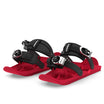
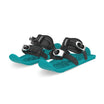












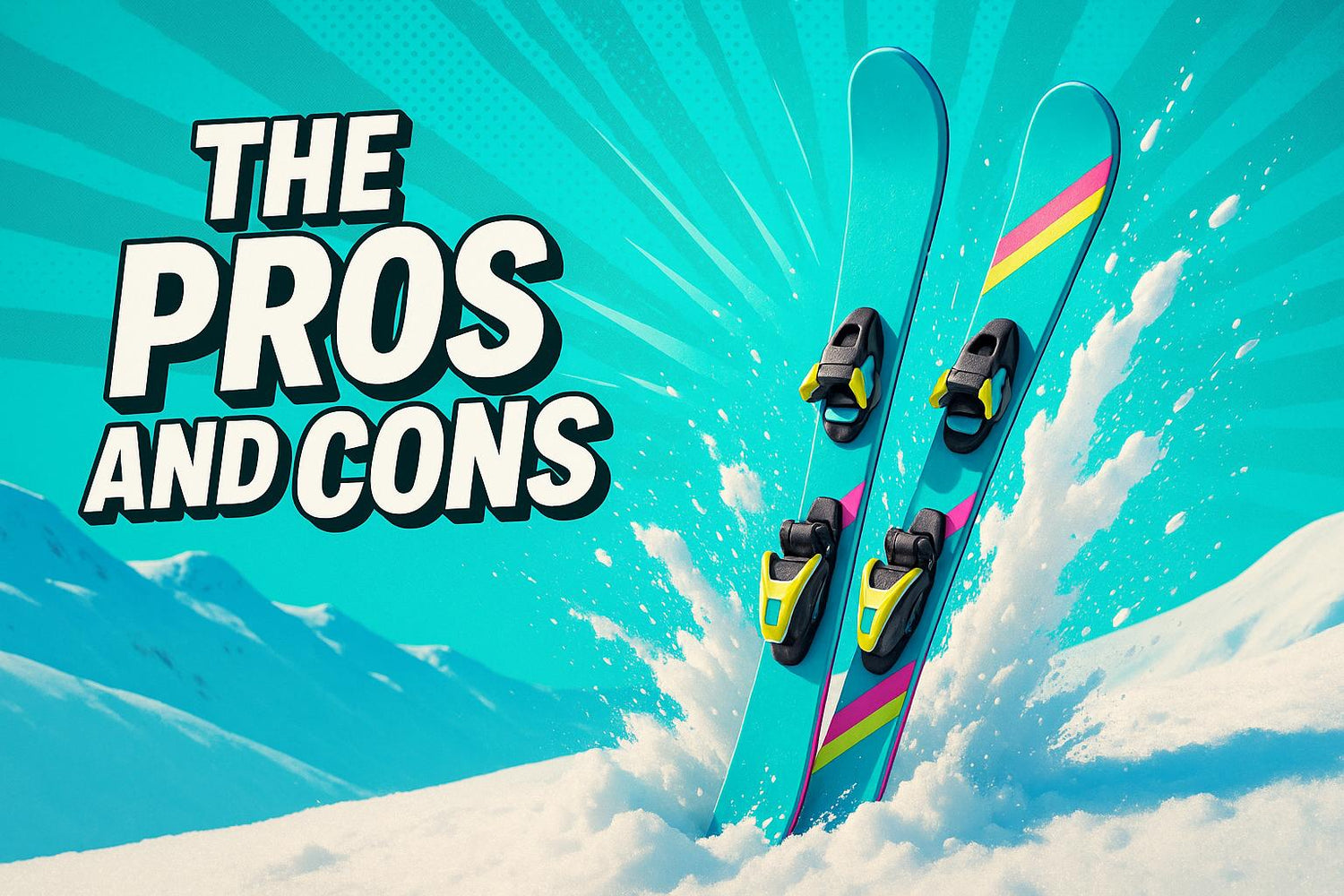
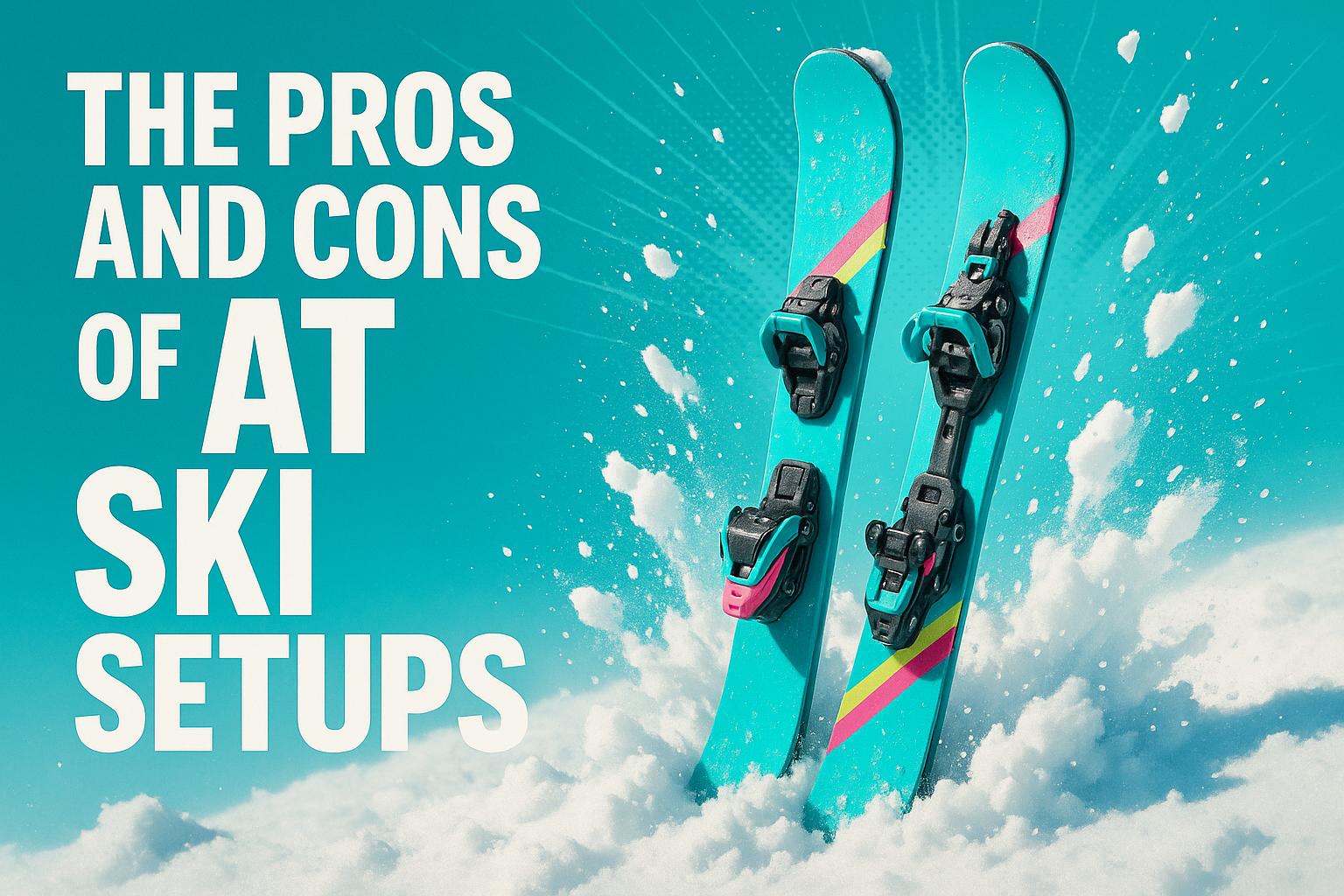
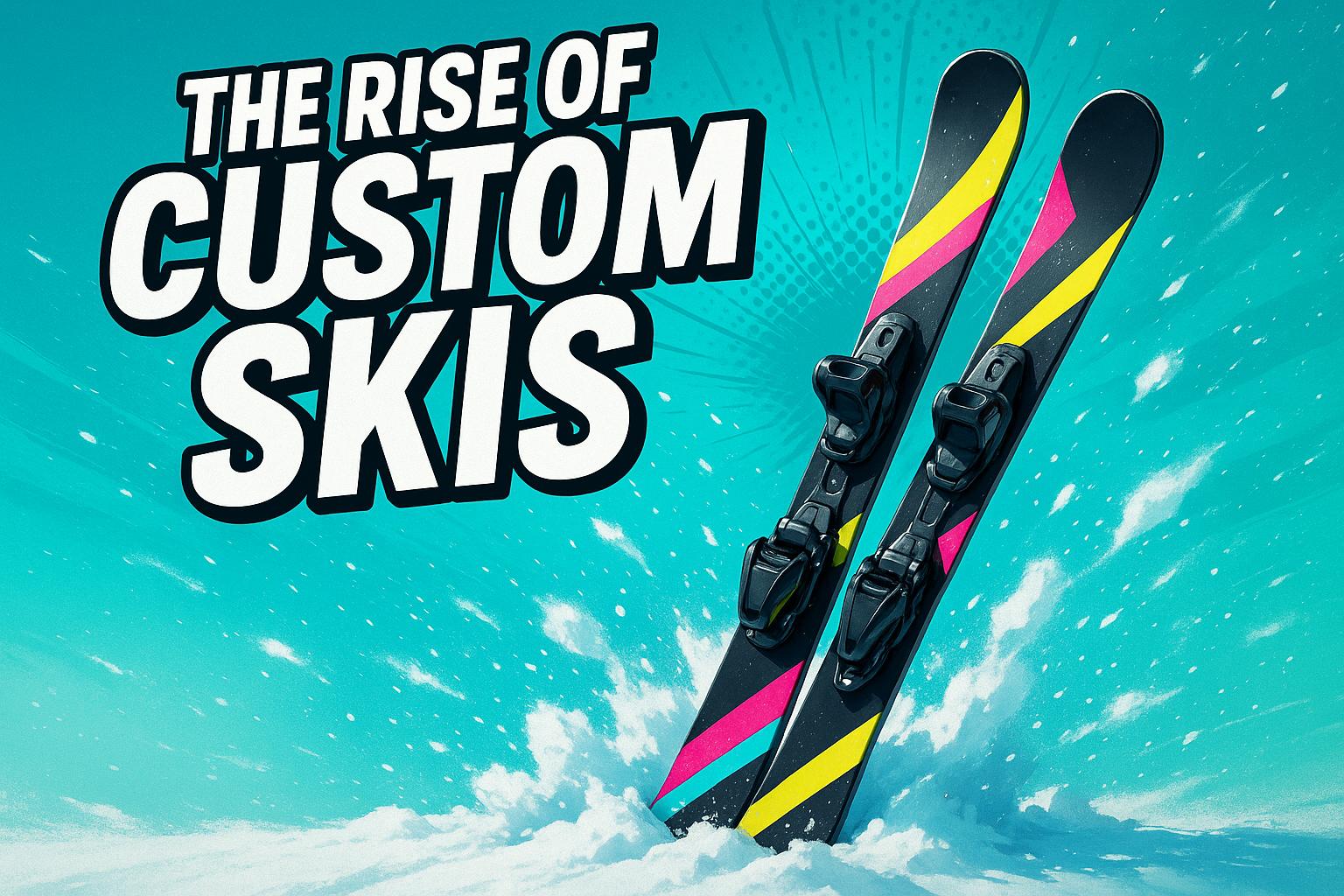




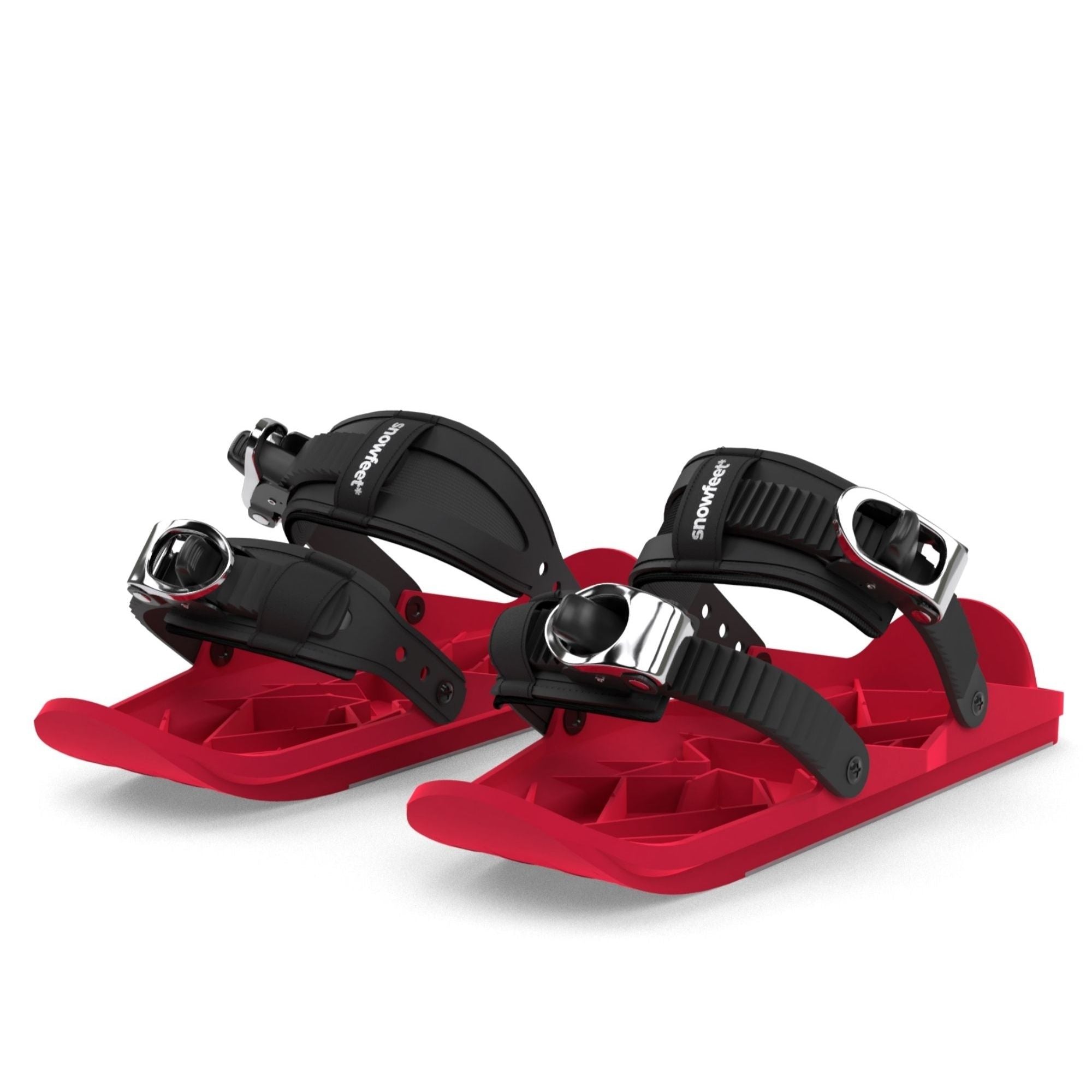
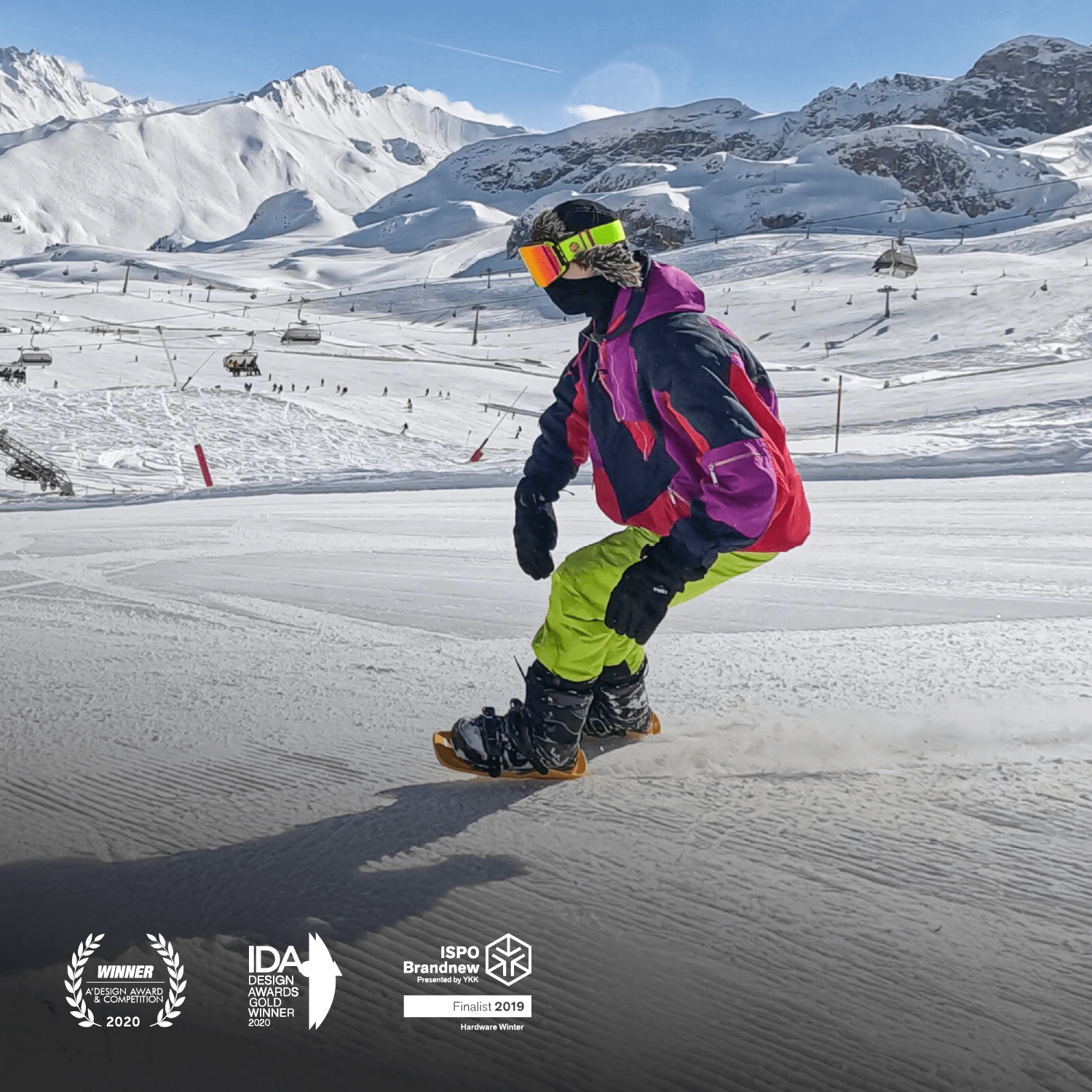




Laisser un commentaire
Ce site est protégé par hCaptcha, et la Politique de confidentialité et les Conditions de service de hCaptcha s’appliquent.